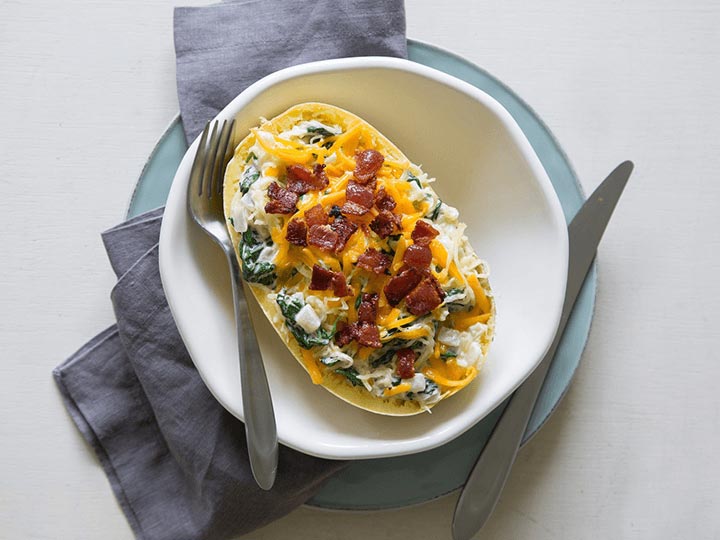 The basic principles of the Paleolithic Diet are simple. All major dietary components are covered- (i.e. vitamins, fats, protein, fats, carbohydrates, antioxidants, phytosterols, etc).
The basic principles of the Paleolithic Diet are simple. All major dietary components are covered- (i.e. vitamins, fats, protein, fats, carbohydrates, antioxidants, phytosterols, etc).
The diet is usually referred to as the “Paleolithic Diet” referring to the Paleolithic or Stone Age era. It is also referred to as the “Stone Age Diet”, “Cave Man Diet” or the “Hunter-Gatherer Diet.;
The basic principles of the Paleolithic Diet are simple. All major dietary components are covered- (i.e. vitamins, fats, protein, fats, carbohydrates, antioxidants, and phytosterols, etc). This is for the simple reason that it is the only diet that is coded for in our genes- it contains only those foods that were “on the table” during our long evolution, and discards those which were not.
Basics of the Paleolithic Diet
For millions of years, humans and their relatives have eaten meat, fish, fowl, and the leaves, roots, and fruits of many plants. One big obstacle to getting more calories from the environment is the fact that many plants are inedible. Grains, beans, and potatoes are full of energy but all are inedible in the raw state as they contain many toxins.
Around 10,000 years ago, an enormous breakthrough was made- a breakthrough that was to change the course of history, and our diet, forever. This breakthrough was the discovery that cooking these foods made them edible- the heat destroyed enough toxins to render them edible. Grains include wheat, corn, barley, rice, sorghum, millet, and oats. Grain-based foods also include products such as flour, bread, noodles, and pasta. These foods entered the menu of the New Stone Age (Neolithic) man, and Paleolithic diet buffs often refer to them as Neolithic foods.
The cooking of grains, beans, and potatoes had an enormous effect on our food intake- perhaps doubling the number of calories that we could obtain from the plant foods in our environment. Other advantages were soon obvious with these foods:
- they could store for long periods (refrigeration of course being unavailable in those days)
- they were dense in calories- i.e., a small weight contains a lot of calories, enabling easy transport
- the food was also the seed of the plant- later allowing ready farming of the species
These advantages made it much easier to store and transport food. We could more easily store food for winter, and for nomads and travelers to carry supplies. Food storage also enabled surpluses to be stored, and this in turn made it possible to free some people from food gathering to become specialists in other activities, such as builders, warriors, and rulers. This in turn set us on the course to modern-day civilization. Despite these advantages, our genes were never developed with grains, beans, and potatoes and were not in tune with them, and still are not. The man soon improved further on these advances- by farming plants and animals.
Instead of being able to eat only a fraction of the animal and plant life in an area, farming allows us to fill a particular area with a large number of edible plants and animals. This in turn increases the number of calories that we can obtain from an area by some 10 to 100 fold or more. Then followed the harnessing of dairy products, which allow a man to obtain far more calories from the animal over its lifetime than if it were simply slaughtered for meat. Dairy products are interesting as they combine a variety of components- some of which our genes were ready for and some not.
Grains, Beans, and Potatoes (GBP) share the following important characteristics:
- They are all toxic when raw- there is no doubt about this- it is a fact that no competent source would dispute- they can be extremely dangerous and it is important never to eat them raw or undercooked. These toxins include enzyme blockers, lectins, and other types. I will talk about them in detail later as they are very important.
- Cooking destroys most but not all of the toxins. Insufficient cooking can lead to sickness such as acute gastroenteritis.
- They are all rich sources of carbohydrates, and once cooked this is often rapidly digestible-giving a high glycemic index (sugar spike).
- They are extremely poor sources of vitamins (particularly vitamins A, B-group, folic acid, and C), minerals, antioxidants, and phytosterols.
Therefore diets high in grains beans and potatoes (GBP):
- Contain toxins in small amounts
- Have a high glycemic index (ie have a similar effect to raw sugar on blood glucose levels)
- Are low in many vitamins, minerals, antioxidants, and phytosterols- ie they are the original “empty calories”
- Have problems caused by the GBP displacing other foods
As grains, beans, and potatoes form such a large proportion of the modern diet, you can now understand why it is so common for people to feel they need supplements or that they need to detoxify (i.e., that they have toxins in their system)- indeed both feelings are absolutely correct.
The essentials of the Paleolithic Diet
Eat none of the following:
- Grains- including bread, pasta, noodles
- Beans- including string beans, kidney beans, lentils, peanuts, snow-peas, and peas
- Potatoes
- Dairy products
- Sugar
- Salt
Eat the following:
- Meat, chicken, and fish
- Eggs
- Fruit
- Vegetables (especially root vegetables, but definitely not including potatoes or sweet potatoes)
- Nuts, eg. walnuts, brazil nuts, macadamia, almond. Do not eat peanuts (a bean) or cashews
- (a family of their own)
- Berries- strawberries, blueberries, raspberries, etc.
Try to increase your intake of:
- Root vegetables- carrots, turnips, parsnips, rutabagas, Swedes
- Organ meats- liver and kidneys
